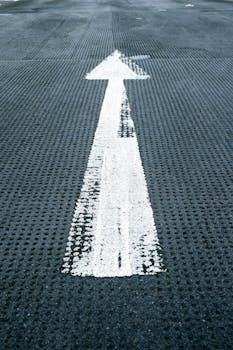Navigating the world of Birkenstock Boston sizing can be tricky․ This guide provides essential information for finding your perfect fit․ We’ll explore European sizing, US conversions, and how to accurately measure your feet․ Understanding width options and footbed fit are also crucial for optimal comfort․
The Birkenstock Boston clog has surged in popularity, becoming a versatile footwear choice for various occasions․ Known for their distinctive closed-toe design and adjustable strap, these clogs offer a blend of comfort and style․ The Boston clog incorporates the signature Birkenstock footbed, providing exceptional support and cushioning for all-day wear․
Whether you’re transitioning between seasons or seeking a comfortable yet fashionable option, the Boston clog fits the bill․ They pair seamlessly with socks and tailored trousers for a trendy look, or can be dressed down with casual attire․
Finding the right size is crucial to fully appreciate the comfort and benefits of the Boston clog․ This guide will walk you through the nuances of Birkenstock sizing, ensuring you select the perfect fit for your feet․ We’ll cover everything from European sizing to width options, empowering you to make an informed decision․ Getting professionally fitted at a Birkenstock store is recommended, especially for your first pair․

Understanding Birkenstock Sizing⁚ European Sizes
Birkenstock utilizes European sizing as its primary system․ This means that all Birkenstock footwear, including the Boston clog, is labeled with EU sizes․ Understanding this system is the first step in finding the correct fit․ European sizes differ from US sizes, and direct conversion isn’t always straightforward․
It’s essential to note that EU sizes are unisex, but the corresponding US size equivalents vary slightly between men’s and women’s shoes․ Therefore, you must use a specific Birkenstock size chart to accurately convert your US size to the appropriate European size․
Birkenstock provides size charts that consider these discrepancies, accounting for both foot length and width․ These charts are readily available on the Birkenstock website and at authorized retailers․ Consulting these charts is crucial for accurate conversion․ Remember that if you are between sizes, it’s generally recommended to size up, as feet tend to expand slightly throughout the day․ The pronounced heel cup in the Boston footbed makes this sizing up recommendation even more important․

Converting to US Sizes for Men and Women
Converting from European to US sizes for Birkenstock Bostons requires careful attention, as the conversion differs slightly between men’s and women’s sizes․ Generally, the European size remains consistent, but the corresponding US size equivalent will vary․
To accurately convert, use an official Birkenstock size chart․ These charts provide specific US size recommendations based on both gender and the European size of the Birkenstock․ When consulting the chart, make sure to identify whether you are looking at the men’s or women’s conversion table․
For example, a European size 40 might correspond to a US women’s size 9-9․5, but it might correspond to a US men’s size 7-7․5․ These discrepancies highlight the importance of using a reliable size chart․
It’s also crucial to consider the width of your foot when converting․ Birkenstocks are available in both regular and narrow widths․ The size chart should indicate which US size corresponds to each width option for a given European size․ If you’re unsure of your width, it’s always best to measure your feet accurately․

Measuring Your Feet Accurately
Accurate foot measurement is crucial for determining the correct Birkenstock Boston size․ Begin by placing a piece of paper against a wall on a hard, flat surface․ Stand with your heel against the wall and your foot flat on the paper․ It is best to measure your feet at the end of the day when they are at their largest․
Have someone trace the outline of your foot, or carefully trace it yourself, ensuring the pen or pencil is held vertically․ Repeat this process for the other foot, as foot sizes can vary․
Use a ruler or measuring tape to measure the length of each foot from the heel to the tip of the longest toe․ Record both measurements in millimeters or inches․
Compare your measurements to a Birkenstock size chart to find the corresponding European size․ Remember to use the measurement of the larger foot if there is a difference․
Consider wearing the type of socks you plan to wear with your Bostons when measuring․ If you intend to wear thick socks, measure your feet with those socks on․ This will ensure a more accurate fit․
Width Options⁚ Regular vs․ Narrow
Birkenstock Boston clogs come in two width options⁚ regular and narrow․ Choosing the right width is as important as selecting the correct length for optimal comfort and support․ The regular width is designed for individuals with average to wider feet, providing ample space and preventing the foot from feeling constricted․
The narrow width is tailored for those with slimmer feet․ Individuals who typically find standard-width shoes too loose may find the narrow width more suitable, offering a snug and secure fit․
To determine the best width for you, consider your past experiences with shoe sizing․ If you often find yourself needing to tighten straps or use inserts to achieve a secure fit in regular shoes, the narrow width might be a better option․
Conversely, if you frequently experience tightness or discomfort in standard-width shoes, the regular width is likely the more appropriate choice․ You could also try standing on a piece of paper and tracing your foot․ Then measure the width of the tracing at the widest point․ This measurement can be compared to Birkenstock’s width specifications․
The Importance of Footbed Fit
The signature Birkenstock footbed is central to the comfort and support these clogs offer․ A proper footbed fit is essential for maximizing these benefits and ensuring long-term foot health․ The footbed should closely mirror the natural contours of your foot, providing arch support, a deep heel cup, and ample toe room․
When trying on Birkenstock Bostons, pay close attention to how your foot interacts with the footbed․ Your arch should align with the arch support, and your heel should sit comfortably within the heel cup․ Your toes should have enough space to wiggle freely without feeling cramped or hitting the edge of the footbed․
An ill-fitting footbed can lead to discomfort, pain, and even foot problems over time․ If the arch support is misplaced, it can cause strain and fatigue․ If your toes are cramped, it can lead to blisters or calluses․
If you’re unsure whether the footbed fits correctly, seek professional advice․ A Birkenstock retailer can assess your foot and recommend the appropriate size and width․ Remember, a well-fitted footbed is the foundation of Birkenstock comfort and support․
Sizing Considerations for Socks
Wearing socks with your Birkenstock Boston clogs can affect the fit, so it’s crucial to consider this when determining your size․ If you plan to wear socks regularly, especially thicker ones, you might need to adjust your sizing accordingly․
When trying on Bostons with socks, ensure you’re wearing the type of socks you intend to pair them with most often․ This will give you a more accurate sense of how the clogs will fit in real-world scenarios․
If you find that your toes feel cramped or the clogs feel too snug with socks on, consider sizing up․ A half size might be sufficient, but if you’re between sizes, it’s generally recommended to go with the larger size․
Keep in mind that different sock thicknesses can impact the fit․ Thin socks might not require any size adjustment, while thick wool socks could necessitate a larger size․ Experiment with various sock types to find the best balance between comfort and fit․
If you’re unsure about the right size, it’s always a good idea to try on the clogs with socks at a store or consult a professional fitter․ They can help you assess the fit and make the appropriate adjustments․
What to Do If You’re Between Sizes
Finding yourself between sizes when choosing Birkenstock Boston clogs is a common dilemma․ Since Birkenstock doesn’t offer half sizes, you’ll need to decide whether to size up or down․ Generally, it’s recommended to size up in this situation․
The reason for sizing up is that your feet tend to expand slightly throughout the day, especially when you’re active․ A clog that’s too small can feel constricting and uncomfortable, while a slightly larger size allows for more wiggle room and better overall comfort․
When you size up, make sure your heel doesn’t slip out of the back of the clog․ You can adjust the strap to achieve a snugger fit, if necessary․
Consider the season and whether you’ll be wearing socks with your Bostons․ If you plan to wear thick socks, sizing up will provide the extra space you need․
If you’re still unsure, you can try using a Birkenstock foot measurement template to determine your ideal size․ Alternatively, visit a store that carries Birkenstocks and have a professional fitter assess your feet․ They can provide personalized recommendations based on your individual needs․ Remember that comfort is key, so choose the size that feels the most comfortable for you․
Sizing for Different Birkenstock Styles (Arizona vs․ Boston)
When comparing Birkenstock sizing across different styles, it’s important to note that there can be variations in how they fit․ While the European sizing remains consistent, the perceived fit can differ due to the design of each style․
The Arizona sandal, for instance, often runs large compared to the Boston clog․ Many people find that they need to size down in the Arizona to achieve a comfortable and secure fit․ This is because the open design of the Arizona allows for more movement and less structure than the closed-toe Boston․
The Boston, on the other hand, generally fits true to size․ However, if you’re between sizes, it’s recommended to size up for the reasons mentioned earlier․ The closed-toe design of the Boston provides more support and stability, so a slightly larger size won’t feel as loose as it might in the Arizona․
Consider your foot shape and width when choosing between styles․ If you have narrow feet, you may find that the Arizona feels too wide, even when sized down․ In this case, the Boston might be a better option, as it offers a more enclosed fit․
Ultimately, the best way to determine the right size for each style is to try them on in person․ If that’s not possible, consult online size charts and read customer reviews to get a better sense of how each style fits․
Where to Get Professionally Fitted
For those new to Birkenstocks, or anyone struggling to find their perfect size, seeking a professional fitting is highly recommended․ A knowledgeable fitter can assess your feet and provide personalized recommendations based on your individual needs․
The most reliable place to get professionally fitted is at an authorized Birkenstock retailer․ These stores typically have trained staff who are familiar with the brand’s sizing and fit guidelines․ They can measure your feet accurately, taking into account both length and width․
During a professional fitting, the fitter will likely ask about your typical shoe size and any foot conditions you may have․ They will also observe how your feet sit in the footbed and how the straps adjust․ This helps them determine the best size and width for your feet․
In addition to Birkenstock stores, some specialty shoe stores and podiatry clinics may also offer professional fittings․ Be sure to inquire about their experience with Birkenstocks and their knowledge of the brand’s sizing․
While a professional fitting may not be necessary for everyone, it can be particularly helpful if you have wide or narrow feet, high arches, or other foot issues․ It can also be a worthwhile investment if you plan on wearing your Birkenstocks frequently, as a proper fit will ensure maximum comfort and support․ Remember to call ahead and check if they provide this service․
Online Size Charts and Templates
When a professional fitting isn’t possible, online size charts and printable templates offer a convenient alternative for determining your Birkenstock Boston size․ These resources, available on the official Birkenstock website and numerous retailers’ sites, can help you estimate your size from home․
Online size charts typically provide a conversion between European sizes (the standard for Birkenstocks) and US sizes for both men and women․ To use a size chart, measure your foot length in inches or centimeters and compare it to the chart’s corresponding measurements․ Remember that these charts are general guidelines, and individual foot shapes can influence the best fit․
Printable foot templates are another useful tool․ These templates, which you can download and print to scale, allow you to physically place your foot on a representation of the Birkenstock footbed․ By standing on the template, you can see how your toes and heel align with the footbed’s contours, providing a visual indication of whether the size is appropriate․
When using online size charts or templates, it’s crucial to measure your feet accurately․ Place your heel against a wall and measure from the wall to the tip of your longest toe․ It’s also best to measure both feet, as they may differ slightly in size․
Keep in mind that online tools are not a substitute for a professional fitting․ If you’re unsure about your size, it’s always best to err on the side of caution and choose the larger size, as you can always add socks or adjust the strap for a more secure fit․

Care and Maintenance to Preserve Fit
Proper care and maintenance are essential for preserving the fit and extending the lifespan of your Birkenstock Boston clogs․ Over time, wear and tear can affect the shape and structure of the footbed, potentially altering the fit․ By following a few simple guidelines, you can keep your Bostons in top condition and ensure they continue to provide optimal comfort and support․
Regular cleaning is crucial․ Use a soft brush or cloth to remove dirt and debris from the footbed and upper․ For more stubborn stains, a mild soap and water solution can be used, but avoid submerging the clogs in water․ Allow them to air dry completely, away from direct heat or sunlight, as this can cause the materials to shrink or crack․
The cork footbed is a key component of Birkenstock’s comfort and support․ To protect the cork, apply a thin layer of cork sealant periodically․ This will help prevent the cork from drying out and crumbling, which can affect the fit and stability of the clogs․
The suede or leather uppers of Boston clogs can also benefit from regular conditioning․ Use a suede brush or leather conditioner to keep the materials soft and supple, preventing them from becoming stiff or cracked․
Proper storage is also important․ When not in use, store your Birkenstock Bostons in a cool, dry place, away from direct sunlight or extreme temperatures․ Stuffing them with paper or shoe trees can help maintain their shape and prevent them from collapsing․
By following these care and maintenance tips, you can ensure that your Birkenstock Boston clogs retain their original fit and continue to provide the comfort and support you expect․


